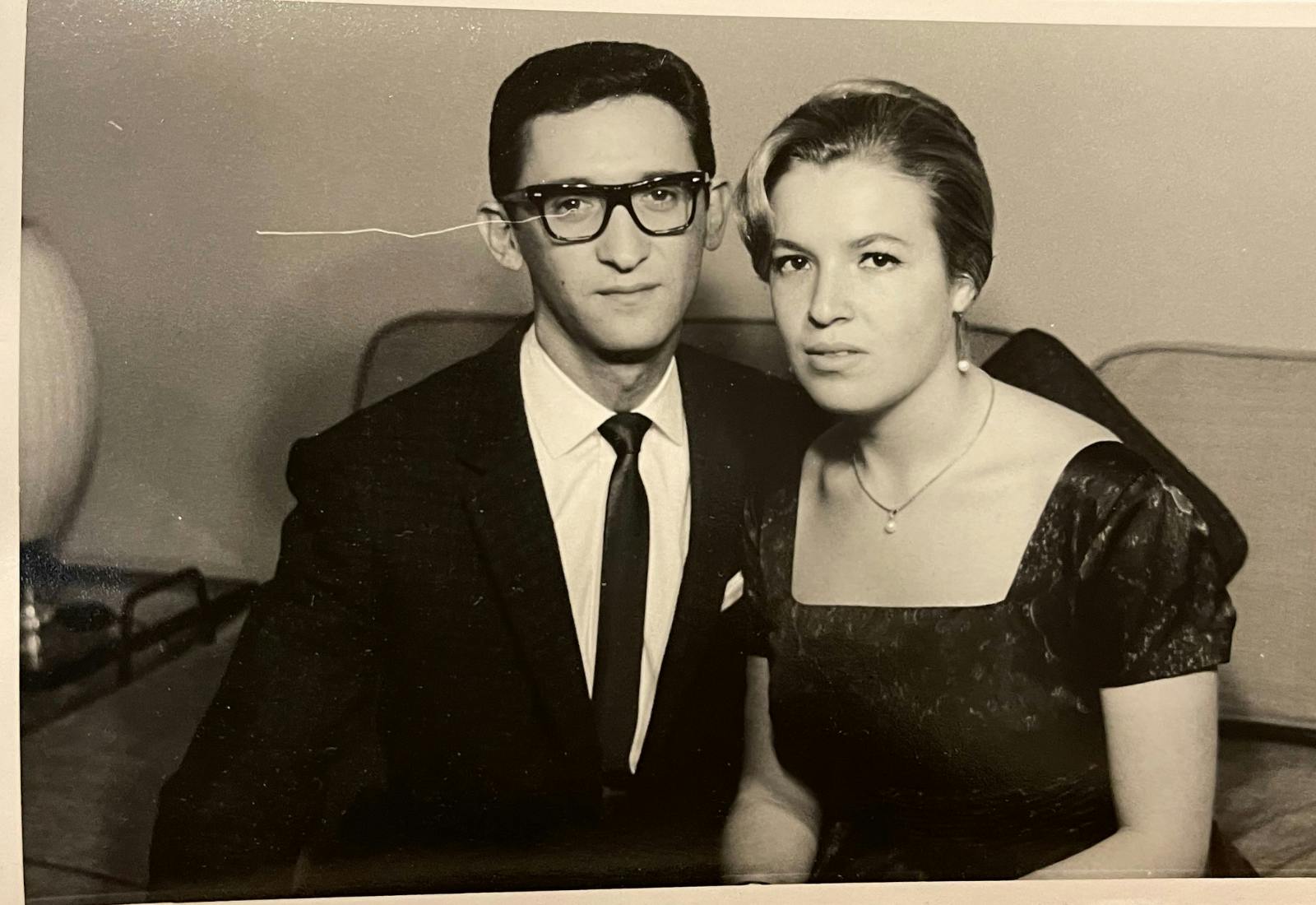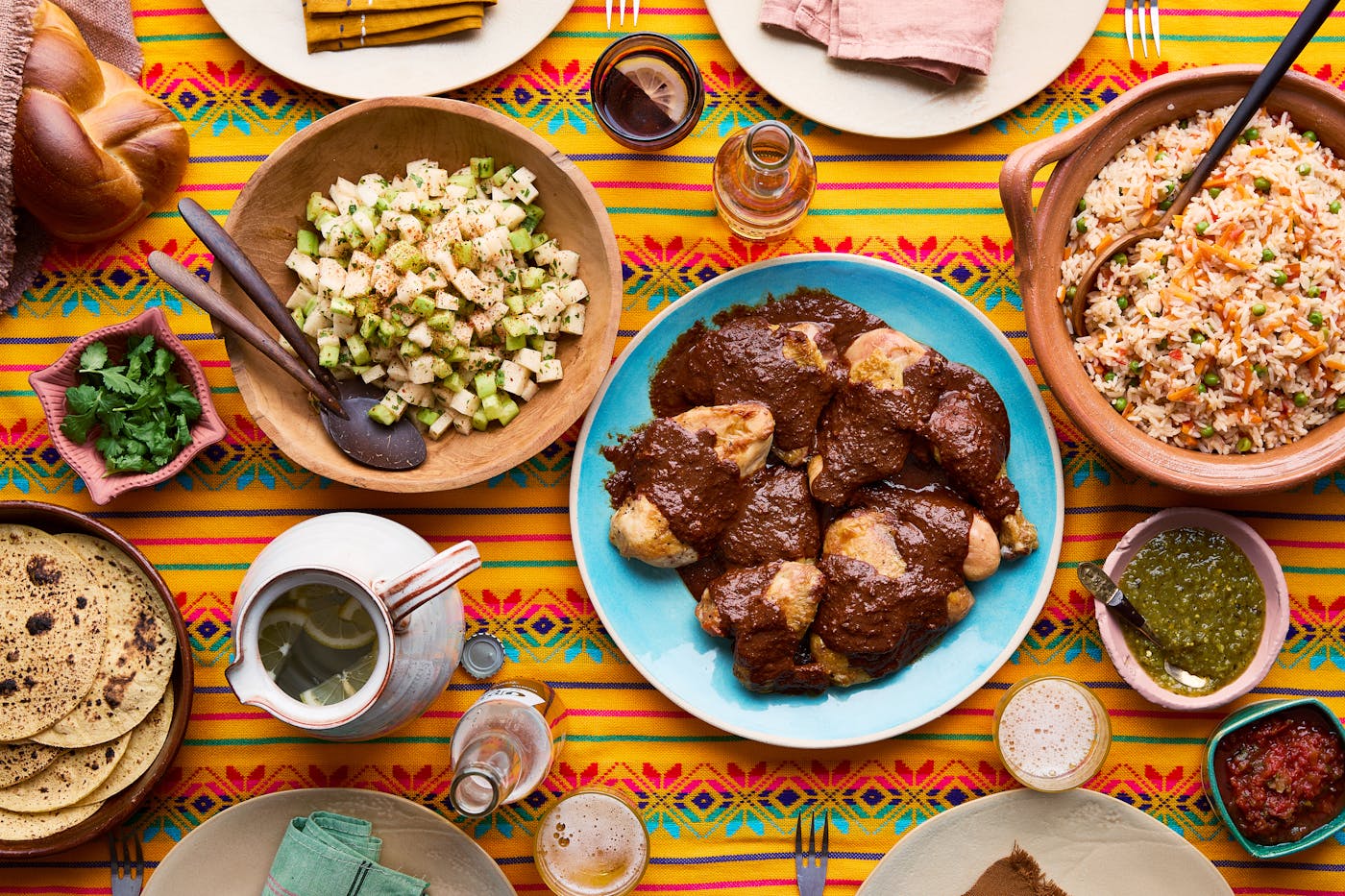Shared by Ilan Stavans


Ilan Stavans is a leading Jewish Mexican scholar and critic, and a professor at Amherst College. Along with Margaret E. Boyle, he is the co-author of the recently published “Sabor Judío: The Jewish Mexican Cookbook.” In this story, he invites us to sit with him at his family table.
Shabbat dinner in my childhood home in Mexico City was a succulent event and a time of introspection. Our house was on Odontología #85, Colonia Copilco, a neighborhood adjacent to Ciudad Universitaria, the nation’s most prestigious university and near the municipality of Coyoacán, which in Nahuatl means “place of coyotes.” It was a bohemian area, filled with artists and intellectuals. Claudia Sheinbaum, the first woman and Jew to become Mexico’s president, lived nearby.
I am the grandchild of Yiddish-speaking immigrants from Poland, Belarus, and elsewhere in the Pale of Settlement, who arrived in Mexico in the early decades of the 20th century escaping pogroms and poverty. One set of grandparents was secular, the other religious. What they had in common was a Yiddishist viewpoint — the conviction that through Yiddish we, the next generation, should define our identity.
Both my grandfathers passed away when I was very little. But, if traffic allowed it, my grandmothers were part of the Shabbat celebrations, serving as an anchor to the past. The Shabbat menu was a fusion of traditions. There was a loaf of challah my mother bought in Colonial Hipódromo, along with kosher wine and chocolate cookies from either Taifeld’s or Burakoff, two titans of Jewish Mexican pastries. However, the main menu often featured typical Mexican dishes like sopa de tortilla (tortilla soup), pollo con mole y arroz (chicken with mole and rice), ensalada de jícama (jicama salad), and poppy seed flan. We frequently had friends as guests, including our beloved Ishai and Sara Podgaetz and their two boys, Shlomi and Eitan.
Although my family wasn’t particularly religious, the ritual of shabbat was seen as an opportunity to slow down the speed of time and make us focus on our inner life. Each of us narrated what was significant in the week that had just passed and the dreams we had about what was coming.
My father would sing a Yiddish medley, like “Zog nit kein mol” and “Papirosn,” we played huapangos like “Cucurrucucu Paloma” and Israeli songs by David Broza, and my brother Darián played the piano. We talked politics, national and global. And since my father was a telenovela actor, he would often talk about the challenges with the most recent screenplay, occasionally deconstructing anti-Semitic tropes he spotted in particular plotlines.
My mother, a psychotherapist, taught graduate classes and had a busy private practice. This meant that she wasn’t involved in the actual cooking. That role was filled by Inés Lopez Caballero, a woman from Texcoco, the center of Nahua civilization (later called Aztecs) before the arrival of the Spaniards in 1523. Inés was moody, but she was a marvelous cook. Her rabo de mestizo (eggs in tomato sauce) was famous among my classmates, as were a number of her desserts.
She, herself, was an extraordinary example of dietary crossbreeding. She learned some of the recipes she prepared from the women in my family (my grandmothers, mother, and aunts), but she also brought Texcocoan flavors to the house as well as other Mexican dishes. At times, these cuisines seem to live separately and at others they would intertwine.
Toward the end of the meal, my mother would talk about Friday night in mystical terms, emphasizing its female dimension. An assiduous reader of Kabbalistic treatises, she was convinced that Shabbat was a distraught bride that descended on earth at dusk to embrace her children, the Jewish people, hence temporarily separating from the more rigid, even tyrannical masculine side of the divine. I remember her retelling rabbinical stories from Martin Buber’s “Tales of Hasidism.”
Somehow, my memory relocated some of those tales to my immediate Mexican habitat, with rabbis performing miraculous deeds in tandem with curanderas, Indigenous healers like María Sabina, known as the “priestess of mushrooms.” In my adolescent mind, these two, the rabbis and the curanderas, were shamans: although they had disparate training, they sought equal forms of enlightenment.
Before Shabbat dinner, my siblings and I would have bike races on the campus of Ciudad Universitaria where we met other neighborhood kids. I would pass nearby a mural by painter Juan O'Gorman. It depicted various stages of Mexican history, from pre-Hispanic times to the age of revolution and modernity. I always felt like a spec of dust next to it. A teacher once told me that O’Gorman wanted to create a mural that would last for centuries, so he made it out of stones. He traveled across Mexico in search of them and even invited children to send him their favorite stones. Scores did and he collected close to 150 types of stones, which served as his pallet.
I also was acquainted with a foundational figure of the university campus, José Vasconcelos, a philosopher and Minister of Education, famous for his occasional anti-Semitic remarks. The juxtaposition of the two, the idealist muralist and the bigoted educator, frightened me deeply. At the Shabbat table, I would ask the adults to explain how these extremes survived in Mexico. If their answer was never easy, it was in the food where I would recognize a balance of influences that filled me with pride. I am still humbled by the spiritual connotations of those meals.
Being restless, I traveled to Europe and the Middle East in my teens in search of my place in the world. I eventually moved to New York in the mid-1990s, meaning I became an immigrant like my grandparents, learning a new language, fashioning a new diet, and reengaging with religious rituals. I ultimately settled in Amherst, Massachusetts. Friday nights with my wife Alison and my two boys, Joshua and Isaiah, incorporated elements from my Mexican childhood: the recipes of my parents’ home, now cooked for the young generation. Some old and new Yiddish medlies and huapangos, along with American music, still serve as background.
The 20th-century German critic Walter Benjamin, a hero of mine, once talked of the “mimetic” experience as the human compulsion to become similar to others while retaining one’s own difference. In retrospect, my Shabbat celebrations have prompted me to reflect on what Jewish food is: the dishes Jews, in their infinite malleability, borrowed from the environment, refashioning them anew. Fusion is the reinvention of tradition.
